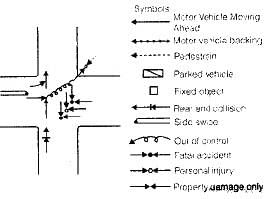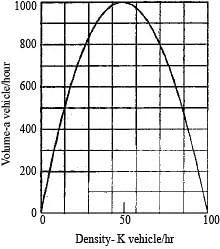Accident Study | Transportation Engineering - Civil Engineering (CE) PDF Download
Introduction

The various objectives of the accident studies may be listed as:
- to study the causes of accidents and to suggest corrective treatment at potential location.
- to evaluate existing designs.
- to support proposed designs.
- to carry out before and after studies and to demonstrate the improvement in the problem.
- to given economic suggested by the trafkc engineer.
There are four basic elements in a trafkc accident:
- the road users
- the vehicles
- the road and its condition and
- environmental factors-trafkc, weather etc.
Accident Records
Location files
- These are useful to keep a check on the location of accident and to identify points of high accident incidence.
Spot maps
- Accident location spot maps show accident by spots, pins or symbols on the map.
Condition diagram
- Condition diagram is a drawing to scale showing all important physical conditions of an accident location to be studied.
- The important features are roadway limits, kerb lines, bridges, culverts, trees and all details of roadway conditions, obstruction to vision, signs, signals etc.
Collision diagram
- These are diagrams showing the approximate path of vehicles and pedestrians involved in the accidents.
- Collision diagrams are most useful to compare the accident pattern before and after the remedial measures have taken.

Measures for the Reduction in Accident Rates
The various measurers to decrease the accident rates may be divided into three groups:
- Engineering
- Enforcement
- Education,
These are termed as “3 – Es”.
Volume and Density
When the speed the traffic flow decreases and becomes zero, the density attains the maximum value whereas volume becomes zero.
For increasing values of speeds, the density decreases, whereas the volume increases upto a certain limit.
At high speed, the valume starts decreasing and density keeps on further reducing. Eventually when volume approaches zone at very high speeds. the density also approaches zero. Thus there is a maximum flow in road corresponding to some optimum values of speed and density.
Capacity flow or Maximum Flow

where, Vst = free mean speed i.e. maximum speed at zero density Ki = jam density i.e. maximum density at zero speed.
Maximum flow qmax occurs when the speed is



|
27 videos|118 docs|58 tests
|





















